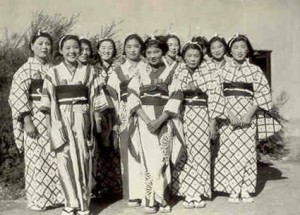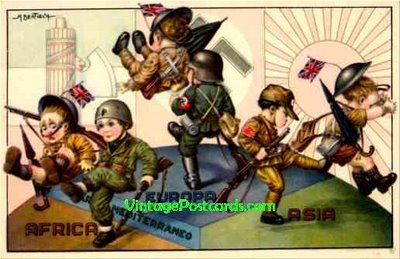Alex Constantine - February 12, 2012
"Before World War II, there were 100 Japanese families living in Lompoc; upon their release from internment camps, only two families resettled here. John McReynolds’ new book, “Vanished, Lompoc’s Japanese: Of One Hundred Families Only Two Returned,” examines why. ... "
About the Book
 John McReynolds, author of "Vanished: Lompoc's Japanese."
John McReynolds, author of "Vanished: Lompoc's Japanese."
The history of Vanished: Lompoc’s Japanese begins now ...
Well, granted, there was that 16-month period kicked off by George Yoshitake’s question: “What happened to Lompoc’s pre-war Japanese community?”
That led to a quick review of the research which turned up very little. People now in Lompoc were children back in 1945. They knew that a substantial Japanese community had existed, and they knew of World War II internment camps, but little more.
Nobody seemed to know why only two percent of that prewar Nikkeijin community returned. “Maybe they didn’t like the weather,” someone said. And in the broader literature of the internment there was little to answer the question. There was plenty about Executive Order 9066 and about General DeWitt, and many first-person accounts of camp life, but not much about relations between the Nikkeijin and the Hakujin other than historians’ accounts of anti-Japanese campaigns of the early century.
No stories of the dynamite and fire at the Doi Packing Shed in 1945 in Placer County, the shootings in Caruthers and in Parlier, the organized boycott in Winters, nor any of the other outbreaks of rural California terrorism that erupted during that period are readily available even now.
Yet Californians were so smug about Jim Crow in the South. And Americans are just as self-congratulatory when they compare U.S. democracy to that of other nations. It seemed to me there was a story here. Maybe if I looked at one small town I might find something interesting.
You can read the result in Vanished: Lompoc’s Japanese. You can also continue the story by sending in your comments, your corrections, your photo identifications. We’ll print them right here, in Book History.
 In Lompoc, a small California Central Coast farm town, V-E Day neared. The U.S. government had finally decided that Japanese-Americans could now return from concentration camps. But on March 9, 1945, the Lompoc Record front page read: “Mystery Fire Damages House on North A St.” The subhead gave a crucial bit of additional information—“Property is owned by Toshio Inouye.” Damage was minor but the police chief could not explain it. Even had it been an accident it gave credence to the series of threatening phone calls which followed
In Lompoc, a small California Central Coast farm town, V-E Day neared. The U.S. government had finally decided that Japanese-Americans could now return from concentration camps. But on March 9, 1945, the Lompoc Record front page read: “Mystery Fire Damages House on North A St.” The subhead gave a crucial bit of additional information—“Property is owned by Toshio Inouye.” Damage was minor but the police chief could not explain it. Even had it been an accident it gave credence to the series of threatening phone calls which followed
"I have just been told that there are threats about burning my house if I have any more Japanese in my home. Ordinarily it would be best not to pay any attention to this, but with the widespread terrorism which is being tried throughout the state it seems necessary to answer it. I led many of these Japanese in the Scouts, taught many of them the value of Christian life of love and forgiveness. Can I so forget?” -– George Kimbel, May 14, 1945
Evidence is circumstantial regarding the role of the most prominent non-Japanese vegetable packing shed owner in town, but there is certainly plenty of it. Tom Parks, the principal business competitor of the Nikkeijin, played a leading role in at least three organizations which lobbied for forced evacuation and which most publicly resisted return. His vegetable business boomed when the Japanese departed.
Parks’ financially-enriched activism, plus wartime hysteria, and covert racism left from the 1920s, not to mention the political weakness of a community whose first generation was still barred from applying for citizenship, combined to wreak havoc. In Lompoc only two Nikkeijin families returned to stay out of 100. This is their story.
 Full of memories from forty-nine scattered Lompoc evacuees and their families, and illustrated with forty pages of photographs never before published, Vanished: Lompoc’s Japanese features thirty pages of documentation, a foreword by Dr. Kent Haldan, an authority on the subject, and memoirs from Tsuyako Suzuki Miyagishima and Elsie McLean Stadley.
Full of memories from forty-nine scattered Lompoc evacuees and their families, and illustrated with forty pages of photographs never before published, Vanished: Lompoc’s Japanese features thirty pages of documentation, a foreword by Dr. Kent Haldan, an authority on the subject, and memoirs from Tsuyako Suzuki Miyagishima and Elsie McLean Stadley.
The bitter story closes with a ray of sunlight. Fifty years after forced evacuation, Tom Lewis, classmate of the Nikkeijin, sought to make amends at high school class reunions. “It was real nice. There was such a warm feeling. I’ve been all over the world but coming to Lompoc is one of my fondest memories,” said Takeo Iwamoto after his first reunion in 1995.
http://vanishedlompocsjapanese.com/book_history.htm
Book Review
Vanished: Story of Lompoc’s lost Japanese community
By Amanda Brooks
Lompoc Record, October 20, 2010
Before World War II, there were 100 Japanese families living in Lompoc; upon their release from internment camps, only two families resettled here. John McReynolds’ new book, “Vanished, Lompoc’s Japanese: Of One Hundred Families Only Two Returned,” examines why.
McReynolds, a former sportswriter for the Lompoc Record who moved to town in 1977, did not set out to write a book about Lompoc’s lost Japanese community. He thought he was just going to write an article for the newspaper to appease his friend George Yoshitake.
Yoshitake had quizzed McReynolds about why he hadn’t included a chapter on the Japanese in his first book, “Lompoc: Padres to Pinot.”
McReynolds’ said Yoshitake called after “Lompoc” was published wanting to know where the Japanese were.
“He said ‘You’ve got all the other ethnic groups,’” said McReynolds.
“John said he couldn’t find anything about them, so I told him‘I’ll help you,’” said Yoshitake.
If not for this questioning and pushing, the story of why the Lompoc’s Japanese families did not return after WWII might have been lost, and along with it any remembrance of the time when there was a large, thriving Japanese community in Lompoc, complete with a school, a church, and two stores, McReynolds said.
True to his word, Yoshitake took to the Internet, where he found an article written by a man who remembered his grandmother driving to Lompoc to pick up relatives, then driving them to Utah.
“I called him and he gave me the number of the Iwamoto family, and from there it kept spreading,” said Yoshitake.
“It was like a daisy chain,” McReynolds said. “They would say,‘Have you talked to so-and-so,’ so I started asking everybody ‘Who should I talk to?’”
McReynolds said that by spiraling out in this way, it gave him the credentials he needed to get people to talk to him.
“They didn’t know who I was, so the only way it could work was by following relationships.”
McReynolds’ first interview, with Chiyo Iwamoto, opened his eyes to the possibility of a larger story as she told him of going from prosperity to penury, almost starving to death during voluntary evacuation in Utah.
Then a cousin of Chiyo’s told McReynolds that “the shed guy riled up the people.”
Until this statement, McReynolds had believed that the decision to evacuate and intern Japanese-American citizens during the war had been solely a military decision. But knowing that “the shed guy” referred to Tom Parks of Parks Packing, a vegetable shipper, McReynolds realized that the decision was highly politicized.
This was the moment McReynolds knew the story was bigger and more important than a single newspaper article.
In addition to interviews with former Lompoc Japanese and current Lompocans who were here at the time, McReynolds found himself researching the involvement of the Western Growers Association and other organizations not only in promoting the wartime incarceration of all Japanese Americans — whether born in Japan or the United States — but also in preventing their return after the war.
Though writing non-fiction that has an emotional depth is what McReynolds wants to do, he had a moment when, after realizing the story was bigger than he had thought, he wasn’t sure he wanted to keep doing it.
“It was taking a big hunk out of my life,” said McReynolds.
“But how often do you have a story looking you in the face involving one of the government’s most unjust acts?”
McReynolds knew that if he didn’t write the story now, those still left who could remember living in Lompoc, now in their 80s, would be gone and the story gone with them.
“There have been six deaths of interviewees since I started this,” said McReynolds, who worked on the book for 16 months.“That’s why I self-published. They don’t have time for this to monkey around with publishers.”
To give the tale an emotional connection and arc, McReynolds centered the story on the Iwamoto family. To keep the story from being simply personal reminiscences, McReynolds needed historical context by including archival and academic material.
Yoshitake proved his worth again when he made contact with Dr. Kent Haldan after hearing him speak in Santa Barbara about the Japanese in Santa Barbara county from 1900 to 1960.
Haldan’s doctoral dissertation, “Our Japanese Citizens, A Study of Race, Class and Ethnicity in Three Japanese American Communities in Santa Barbara County, 1900-1960,” looked at Santa Barbara, Santa Maria and Guadalupe, but essentially omitted Lompoc because there were no remaining Japanese Lompocans to talk to.
Haldan, who has spent 20 years studying the Japanese in California, said that after getting to know McReynolds, he felt confident sharing his research with him.
“He seemed like he was totally committed to doing this right, so I helped him,” said Haldan.
Haldan let McReynolds photocopy his dissertation, then provided him with a map showing Japanese-cultivated farms in the Lompoc valley, a survey of Japanese farmers conducted on behalf of then Santa Barbara County District Attorney Percy Heckendorf, War Relocation Authority papers and a comprehensive list of all the Japanese families that lived in Lompoc prior to WWII.
“It was like manna from heaven,” said McReynolds of the resources Haldan gave him. “It was invaluable. I don’t know that I would have found it.”
One of the things that motivated McReynolds as he wrote was learning that all the rumors that ruined the amicable race relations in Lompoc prior to Dec. 7, 1941, were completely unfounded.
“All these rumors went around and around,” said McReynolds. “But they never showed evidence and they turned out not to be true.”
Another motivating factor, he said, was the way the story seemed to parallel today’s anti-Muslim sentiments.
“If there is a broader appeal, it’s to get people to stop and think a bit before lumping all people in an ethnic group together,”said McReynolds. “That helped keep me going.”
Chapter One: Chiyo’s First Prom
Chiyo was only a sophomore when senior Noboru Wakumoto invited her to the Lompoc High School prom.
None of Chiyo’s four older sisters had attended a prom.
In fact few Japanese had ever attended. It was not a segregated event, but Rev. Kyogoku of the Buddhist congregation was against dancing, and there was always work to be done at home.
Noboru Wakumoto was a three-sport athletic star. He lettered three straight years in basketball, baseball and track. The weekend before the prom he had placed second in the shot put at the San Francisco YMCA’s Japanese Olympics. He was a good dancer and he was a regular at the Presbyterian Church. Since his father owned Wakumoto Garage, Noboru had easy access to a Chevrolet.
At Chiyo’s house, mixed feelings swam about like fish in a bowl regarding her invitation, but that was nothing new. Reservation and reluctant approval often vied when Chiyo was the subject. “My mother always felt I was growing up too fast,” Chiyo confides now with a laugh. “But after five girls she was getting tired.”
Chiyo Iwamoto was her parents’ baby by five years. As proprietor of H.S. Iwamoto General Merchandise, the largest Japanese retailer in Lompoc, her father had become over 30 years the Japanese community’s most successful merchant. Heserved as treasurer of the Lompoc Japanese Society. When the Consul General of Japan came to visit, Harry Iwamoto hosted him.
Within the confines of the Japanese community, Mr. Iwamoto’s pretty and vivacious youngest daughter pushed the envelope. Her sisters were amazed that she could get away with things they never could. As a child she badgered her mother for candy. In junior high she rode her bike, with just a girlfriend, Katie Inouye, and without permission, four miles up Miguelito Canyon to the park. The prom was just one more example of Chiyo being Chiyo.
“I remember my light blue dress. It had a net skirt and I can remember a white satin coat. I went shopping by myself to two stores. That was rare in those days when everybody sewed at home. I was only 15. I probably charged it and my father paid for it.” Seventy years later her laugh retreats to a conspiratorial giggle. “It was my first dance. I was so excited. I was justworried because I did not know how to dance.”
The school social leaders were there: Ben Ruffner, the student body president and future judge, Jerry Laubly and Beverly Mello, the senior class presidents. But Chiyo had lots of non-Japanese friends. “Many of my friends were white,” she recalls. She was not intimidated as she floated on Noboru’s arm up the steps of the Veterans Memorial Building. She giggles again.
“When I got invited to the prom, it was a big deal.”
The theme for the evening was “Wishing.” The entrance to the hall had been decorated as a wishbone. In one corner stood a wishing well. Bud Olson’s big band orchestra serenaded from a pot of gold. Hanging cardboard stars sparkled from the ceiling.
Chiyo’s floor-length taffeta gown flared from the waist. She wore a corsage made of pink-and-white carnations that Noboru’s sister had picked from their mother’s side garden. Chiyo’s makeup was impeccable. Her high heels leveraged her five-foot height to within eye contact of six-foot blond football players.
Chiyo waltzed first with Noboru, though not too close what with imperious Miss Bowen, the LHS English teacher, serving as chaperone. Then Chiyo danced with all Noboru’s athletic friends—Nikkeijin and not. Her evening blurred into a happy fog. As Kenji Ota testified years later, “She was glowing.”
After the last dance a poll took place among the football squad for “Prettiest Girl” at the prom. The winner …. Chiyo Iwamoto.
The honoree would never attend another high school dance. Ten months later she would quietly leave town in a caravan of cars bound for a Utah desert.
http://vanishedlompocsjapanese.com/media_room.htm








So basically the japanese internment was done by rightwingers to the japanese in order to take out the competition, and also people who were nicer, kinder, more moral, and more respectful than the whites in Lompoc. And that my friends is why it is the rightwing attacks anyone; the threat of a good example. Read it slow and understand it;
THE THREAT OF A GOOD EXAMPLE.
And that is the reason why it is that Bush absolutely had to attack IRaq and murder off all those civilians; because they were better people than he was and their society cared for their people much moreso than most mainstreamed white center=right corporate republicratic Amerikkkans. So their imperfect religious socialism was replaced by an order that either killed them off fast, in war, or slow by medical budget cut. I am sure that the science of medicalized killing has advanced a long way under the globalist nazi Bush. How do you dress up a mass murder and make it look like death from natural causes or suicide. The first public health director in Zimbabwe swore that Ebola was also spread on purpose along with Cholera when the nazis were kicked out of that government. See Rhodesian Front War by Henrik Ellert and the article volume 23, #6 pp. 1159-1179 by Ian (I can’t remember just now). . .
See also the book, The Hanna Mining Complex for more on the corporation-death squad connection. Connections with both a nations military and mass murdering elites have been verified repeatedly in every serious death squad mass murder over a period of years; 2 years of huge numbers of murders in guatemala 1981-1983. It is all about mazimizing investments’ potentials.
Third World Quarterly Volume 23, #6, pp. 1159-1179 article on zimbabwe by Ian Martinez; that’s it.